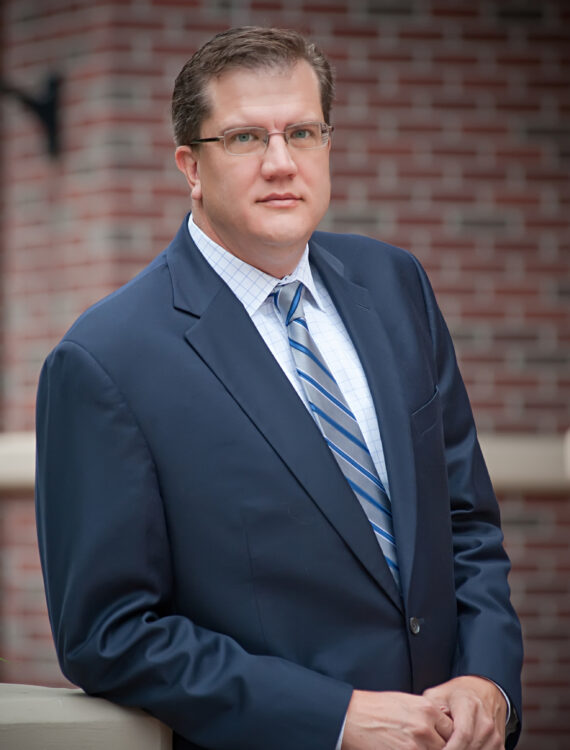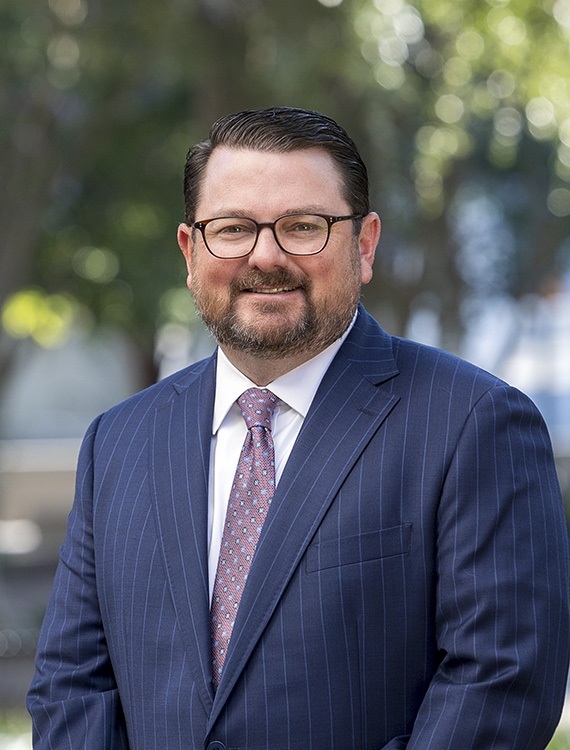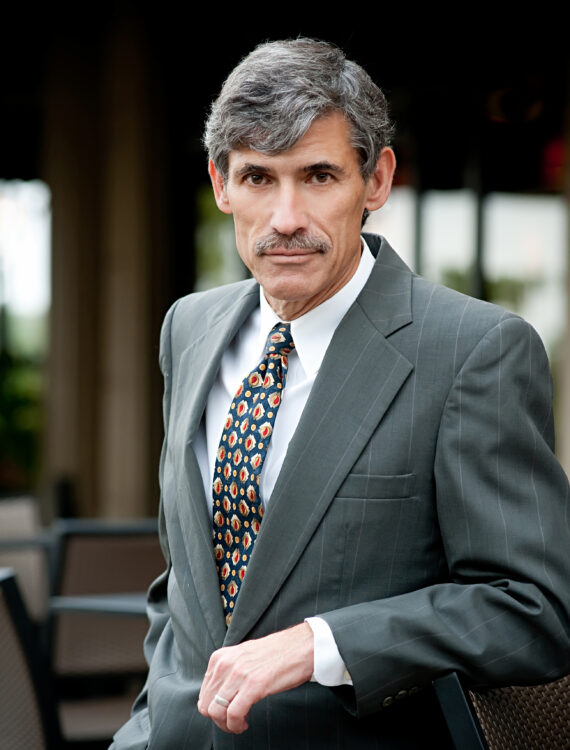For Florida insurance woes, no shortage of suspects to blame
From climate change to lawmakers to a coastal development boom, why we are one active hurricane season away from a disaster that could doom the state’s financial future?
By Brandon Larrabee
Story updated at 1:49 AM on Sunday, Aug. 9, 2009
TALLAHASSEE – On Aug. 12, 2004, Tropical Storm Bonnie slammed into the state south of Apalachicola. For the next two months, Floridians would see a break between storms of more than two weeks just once.
A day later, Hurricane Charley struck the Dry Tortugas. On Sept. 5, it was Hurricane Frances at Hutchinson Island. Hurricane Ivan made landfall in Alabama on Sept. 16, causing major damage in the Florida Panhandle; its remains crossed Florida again Sept. 20.
Five days later, Hurricane Jeanne struck Hutchinson Island, making 2004 the first year since 1885 that any state had been hit by four hurricanes.
The following year, it happened again. Between June 11 and Oct. 24, Florida was lashed by Tropical Storm Arlene, Hurricane Dennis, Hurricane Katrina, Tropical Storm Tammy and Hurricane Wilma.
"Nobody ever thought we could have four hurricanes in one year that could do damage," said Jim Massie, Florida counsel for the Reinsurance Association of America, an industry group. "Then, two years in a row we had four hurricanes in one year."
So premiums began to rise.
Politicians and regulators pushed back, authoring a complex set of government interventions that critics now say bought lower insurance rates at a steep cost – endangering the state’s financial future.
If a major hurricane hit a large metropolitan area today, the state could be forced to boost taxes on insurance policies and take out billions in debt to cover shortfalls in taxpayer-backed insurance plans. Some doomsday scenarios include bankruptcy.
"They get a big hit, like Andrew or bigger, they’re going to have to go to the bond markets at a time that it’s not good to go to a bond market," said Walter Dartland, executive director of the Consumer Federation of the Southeast, a consumer watchdog group.
Funding that debt will be difficult, Dartland said. "They’ll have to go across the board and raise taxes almost on everything."
Eventually, many believe, the danger will lift, with lawmakers passing a sweeping overhaul of state-backed insurance plans that should help keep the state solvent – if luck is on Florida’s side while the changes take effect.
It could take six years to entirely wipe away billions of dollars of state obligations to back up insurance companies in the event of a catastrophe. And with premium increases in the state-backed property insurance program for consumers capped by law, it’s unclear how long the state will have to increase rates before premiums can cover the program’s responsibilities.
Recent light hurricane seasons aren’t enough to shore up the programs’ financial health.
There are other complications. State Farm Florida, the state’s largest private insurer, has vowed to withdraw within a year and a half, saying the regulations it faces have squeezed its business beyond the breaking point. Nearly a million policy holders would be forced to find a new insurance carrier. Many could be pushed to buy more expensive policies or end up in the state insurance plan, further swelling the program’s rolls.
Five years after Bonnie came ashore, Florida is still picking up the pieces.
Rising rates, public pressure
Flustered by the unusual years – and suspicious they were harbingers of a trend of increasing numbers of larger, stronger and more expensive storms – prices in the reinsurance market skyrocketed by 75 percent. As the name suggests, the reinsurance market is where insurance carriers who sell to the public go to purchase coverage for themselves in case of a catastrophe.
"They raised their rates dramatically in 2006, and the private carriers began to pass that on," said Sam Miller, executive vice president of the Florida Insurance Council.
It was too much for some. Dick Goodman, a writer and photographer who lived in Miami for nearly 30 years, said property insurance was a major factor in his move to Atlanta.
"I was approaching retirement, and I was looking at a $3,000-a-year home insurance bill," Goodman said.
Candidates for public office took notice.
Elected in 2006, Gov. Charlie Crist rode into office at least in part on a wave of discontent with insurance companies. Some legislative candidates also teed off on an increasingly unpopular industry that was aggressively raising the costs of a product Floridians had to have in order to own a home.
In his inaugural address, the new governor declared property insurance reform to be "item one."
"I pledge the full resources of my office to work with the leaders of the House and Senate along with our new chief financial officer to bring our people the relief they need," Crist said.
But Massie said the governor and lawmakers were already too late. The market that was so volatile in 2006 had largely calmed down. Crist and lawmakers plowed ahead anyway.
"They really reacted to something that was no longer a problem. … They should have left things like they were," Massie said. "They made it worse."
There were three major planks of the insurance reform undertaken in 2007: Boost the state-run Florida Hurricane Catastrophe Fund, allowing insurers to obtain cheaper reinsurance; freeze the rates of Citizens Property Insurance Corp., the state-run plan that had sparked outrage by announcing big jumps in premiums; and ease eligibility standards for Citizens.
The attitude toward insurers is clear, said Jeff Grady, president of the Florida Association of Insurance Agents.
"What they’ve done is, they’ve decided, ’To hell with them. If they can’t provide it to us cheap, we’ll provide it to us cheap,’" he said.
For Citizens, the eligibility changes were sweeping. No longer would consumers have to prove they couldn’t find insurance anywhere in the private market. Instead, premiums that were simply too much higher than Citizens’ rates would be enough.
"They set Citizens in the market as a price indicator, and all those carriers cannot get too far away from that, or they’re not going to get the business," Grady said.
It also continued to boost Citizens’ rolls, already soaring in the aftermath of the 2004-05 seasons. The number of policies in Citizens’ largest account for homeowners jumped from 407,000 in 2005 to 845,000 in 2007. Efforts by the state to wean some homeowners off Citizens had some success, but the largest insurance lines still totaled more than 629,000 in 2008.
The next largest insurer was State Farm Florida.
State Farm plans exit
In July 2008, State Farm Florida was worried about its financial future, according to filings with the Office of Insurance Regulation. Its surplus was expected to dwindle to $56 million by the end of 2010, and the company would find itself $311 million in the hole by the close of 2011. The company asked the state to allow it to increase rates by an average of 47.1 percent statewide.
On Aug. 25, Insurance Regulation told State Farm the new rates would not be approved. Regulators listed 23 reasons why the company’s filing failed to prove it needed the rate increase. An administrative law judge upheld the agency’s decision in December, and Insurance Commissioner Kevin McCarty formally rejected the rate increase a month later.
State Farm announced soon afterward it was withdrawing from the market.
Based on data through the third quarter of 2008, State Farm’s surplus is now projected to decline at an accelerating pace even with no hurricanes, the company wrote in a filing notifying Insurance Regulation of its plans to withdraw. "The projected result of this decline in surplus is insolvency in 2011."
Crist could hardly hide his disdain for the company at a news conference the day State Farm announced the move.
"They probably charge about the highest rates in the state," the governor said. "Floridians will be much better off without them."
In a recent interview, McCarty said it wasn’t simply the size of the rate increase that caused the rejection. It was how State Farm decided to support it – with documents, risk models and accounting methods he said aren’t allowed under state law.
"If the rates were approvable, I would have approved them," McCarty said. "But you’ve got to play by the rules. … You can’t just back into a number."
But instead of pounding away at State Farm for its planned withdrawal during committee meetings, lawmakers grilled Insurance Regulation officials.
"I really would like for you to go back and assess why you should bring State Farm back into this market," Senate Minority Leader Al Lawson, D-Tallahassee, told McCarty. "Because I think what you have done is a travesty. It does not make sense."
In April the Legislature overwhelmingly approved legislation that would have stripped McCarty’s office of most of its ability to regulate rates for insurance companies with large cash reserves, but Crist vetoed the proposal.
Even some insurers, though, feel that the criticism directed at the Office of Insurance Regulation isn’t entirely fair.
William Stander, assistant vice president of the Property Casualty Insurers Association of America, an industry group, suggested the orders are coming from higher up.
"The regulators are doing what they’re told to do, which is get tough," he said. "The question is, is it working? At the end of the day, are things better now than they were at the end of that special session?"
Last week regulators approved State Farm’s request to allow the company to eliminate a handful of discounts it currently offers customers, boosting rates an average of 28.4 percent. But the regulation office rejected State Farm’s bid to do away with discounts to consumers who harden their homes to minimize hurricane damage, saying that mark-down is required by state law.
The company has given no indication that it’s reconsidering its decision to leave Florida’s property insurance market following the ruling on the discounts.
National wind insurance
State Farm’s exit would be part of a broader strategy of retrenchment by the insurance industry to reduce its exposure along the coast, either by outright withdrawals or by ratcheting up prices, said U.S. Rep. Gene Taylor, a Mississippi Democrat pushing a plan that would allow the federal government to offer wind coverage.
"The insurance companies after Katrina pulled one-by-one out of coastal states," said Taylor, who peppers a conversation about property insurance with accusations that the companies are "screwing" taxpayers and homeowners in the wake of the monster storm.
Taylor’s plan would create something approaching a national version of Citizens, allowing homeowners to buy a wind policy much like many buy flood insurance from a government-guaranteed program. A national plan would be better able to absorb financial blows, Taylor said, because premiums would also come from states where no disasters were taking place.
"The chances of every coastal community getting hit in the same year, that’s called Armageddon," he said. "Don’t worry about claims; that’s the end of the world."
Critics also say the insurance companies created a sense of financial difficulties for companies in select states that they deemed too risky.
U.S. Rep. Ron Klein, D-Fla., is pushing a plan that would spread the risk by creating a national backup to funds such as the Florida Hurricane Catastrophe Fund.
Each state would essentially buy coverage from the plan but pledge to pay a certain amount of damages, based on how much risk was in that state, before drawing on the federal program.
"If you put them all into a risk-sharing pool, you will stabilize the market," Klein said.
Warming alters equation
While insurers and lawmakers battled over who should cover what, the bizarre hurricane seasons in 2004 and 2005 fed into the growing alarm about climate change. While scientists don’t uniformly suspect global warming causes more tropical storms, some say rising sea temperatures are making storms more intense.
Suddenly insurance companies and those who built the risk models for them began looking to map out more active and expensive hurricane seasons. They pressed for models that project risk over a shorter time frame – five years instead of decades.
While the models can’t be used as a basis for rate filings in several states, including Florida, they give a sense of how the industry views the likelihood of increasing storms in coming years.
But Karen Clark, who runs a Boston risk-management company, studied the new models and found serious flaws.
While short-term models projected 22 to 25 hurricanes in the Atlantic from 2006 to 2008; there were actually 19. The long-term average was closer to reality: 17.7 hurricanes.
"Right now, what we’re seeing is that they don’t look as if they have a lot of credibility," Clark said of the short-term models.
Ourselves to blame?
There’s also the question of how responsible Floridians themselves are for the property insurance crisis.
Florida is, in terms of land value and the likelihood of a hurricane strike, one of the highest-risk places in the world. In all, the value of the state’s hurricane-prone coastal properties is now estimated at $2 trillion.
"By far the dominant influence on the level of insurance losses … is the growth in coastal property value rather than the growth in the number of hurricanes in any given year," said John Rollins, vice president at AIR Worldwide, a risk-modeling company.
"Floridians need to understand that Florida is a high-risk area, a high-risk state," said Christian Camara, director of the Florida Insurance Project at the Competitive Enterprise Institute, a small-government think tank. "That’s something that we are unfortunately going to have to get used to."
That build-up has been exacerbated, critics say, by state policies that keep insurance rates artificially low.
"It makes really no rational sense for us to be subsidizing people to live right up on the water’s edge," said Jay Liles, policy consultant for the Florida Wildlife Federation. Liles’ group supports higher premiums as a way to discourage over-development.
Even Goodman, prompted to leave Florida by the storms of 2004-05, sees the plans giving the national government a greater role in the market a step in the wrong direction.
After all, Goodman said, he’s an example of how the market worked – the prices got too high, and he moved away. Reversing that trend is a mistake.
"We’re setting up a situation," he said, "where it will make it affordable to live in dangerous places."
brandon.larrabee@jacksonville.com, (678) 977-3709












